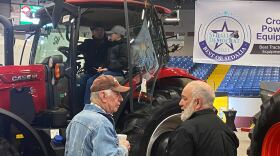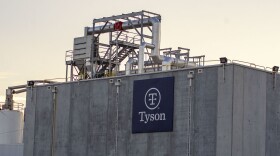-
The crossbreed gained some attention in the 1970s. Supporters today say there is big potential to provide better, healthier meat by combining the best qualities of the two animals, in just the right amount.
-
The Kansas Livestock Association pushed for the labeling law as part of a national initiative to protect the cattle industry's meat-selling market share.
-
Fertilizer prices have doubled from a year ago, but farmers still need to get nutrients into the ground. Some are finding relief from costly synthetic fertilizers in manure.
-
For towns with only a few hundred residents, keeping tap water clean and safe can pose a crippling expense. The predicament is likely to become more common in western Kansas as farm chemicals seep into dwindling water supplies.
-
The pandemic introduced virtual options for the farm show. On the heels of declining numbers of farmers and technology improvements, some predict an eventual end to the in-person gatherings.
-
Cotton growing is on the rise in Kansas, but it still only accounts for a small fraction of the state’s farm production. Now, a combination of global warming, dwindling water and new infrastructure might set the stage for southwest Kansas to become cotton country.
-
Nationwide, COVID-19 disproportionately affected communities of color — in part because the U.S. relies on immigrant workers in food and agriculture.
-
Immigrants make up an estimated 40 percent of the U.S. meat processing workforce. Last year’s wave of COVID outbreaks at meatpacking plants exposed many vulnerabilities among the industry’s diverse workforce.
-
The coronavirus swept through the nation’s meat processing facilities in 2020. Nearly two years into the pandemic, many are still searching for answers — and calling for change.
-
The Seaboard plant in Guymon, Oklahoma, failed to record injuries that required more than basic first aid and place protections to prevent injuries from repetitive motions and lifting.
-
Large donors can put universities in potentially awkward positions when faculty conclusions conflict with the interests of those benefactors. Data collected by Harvest Public Media and Investigate Midwest show corporations have given at least $170 million to ag colleges in the past decade.
-
TIAA-CREF invests heavily in farmland, so it paid a university to research it.
Play Live Radio
Next Up:
0:00
0:00
Available On Air Stations












